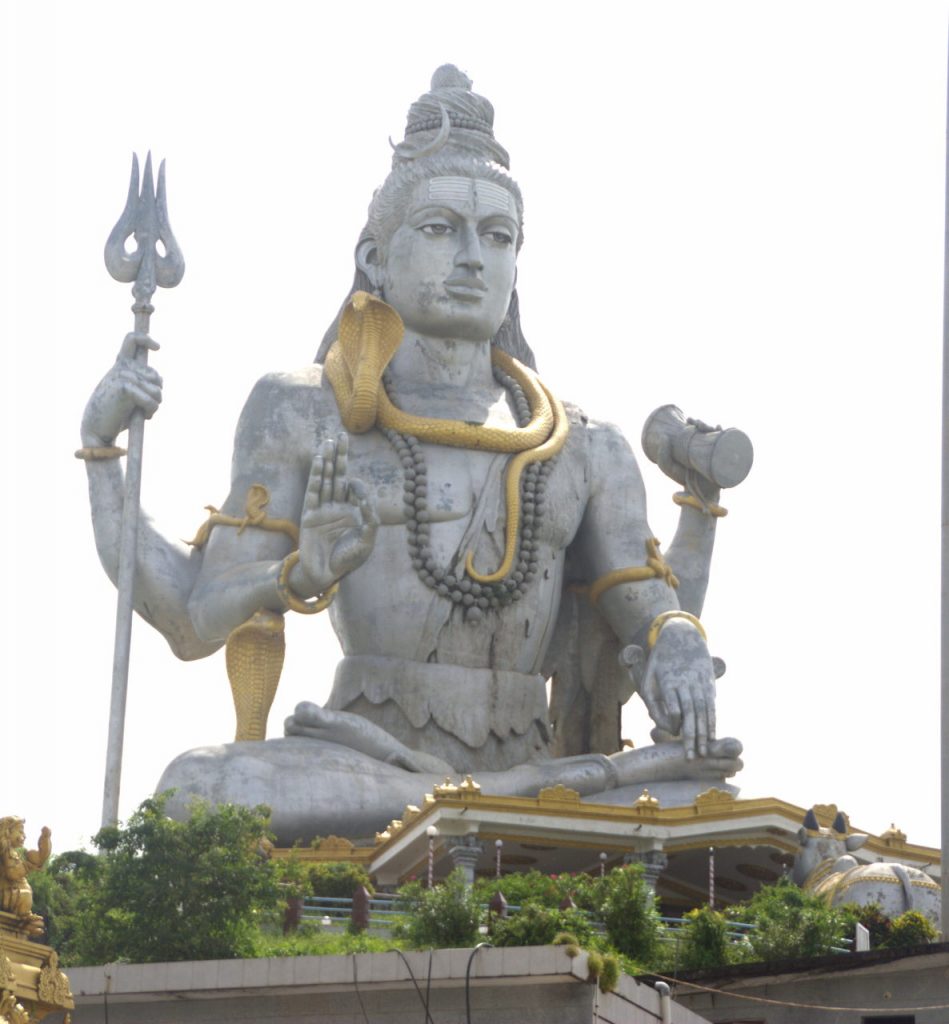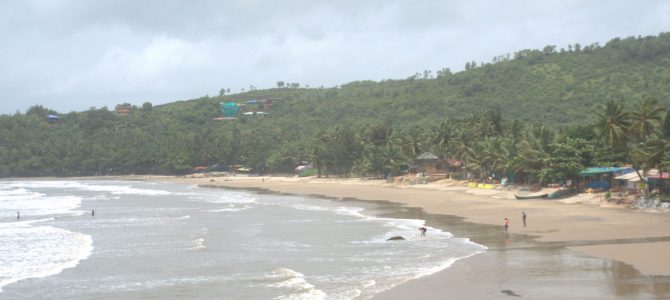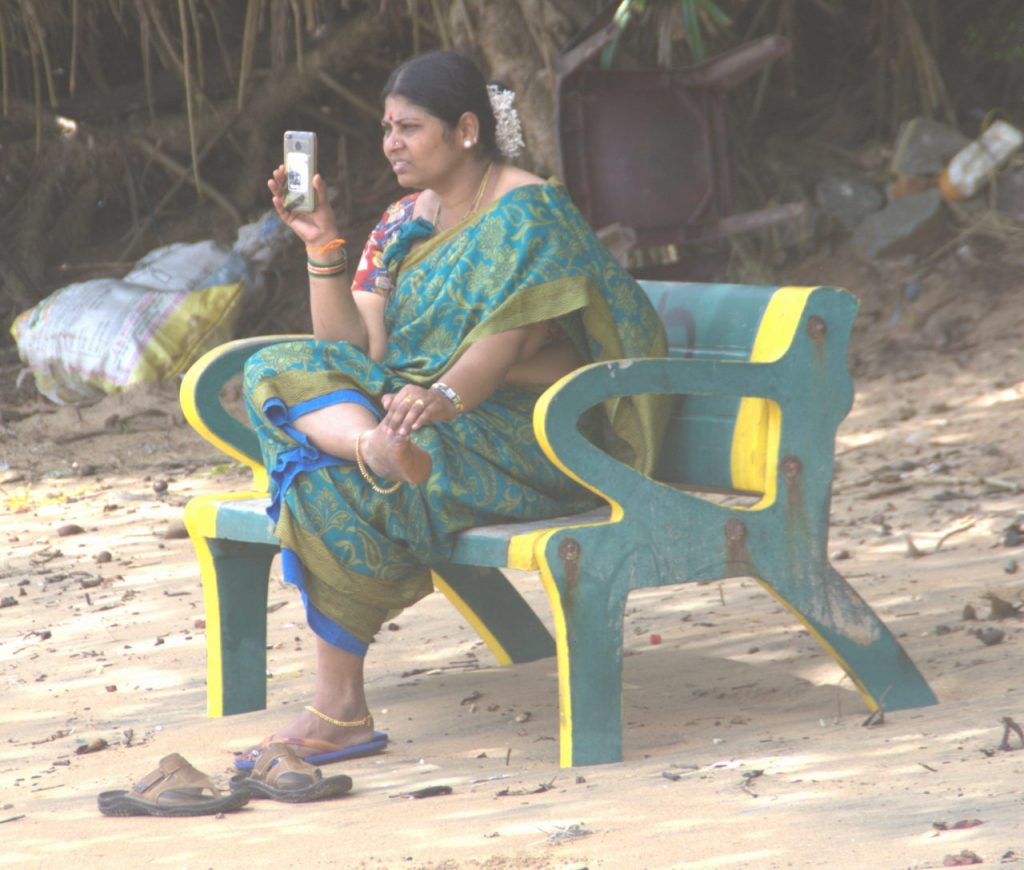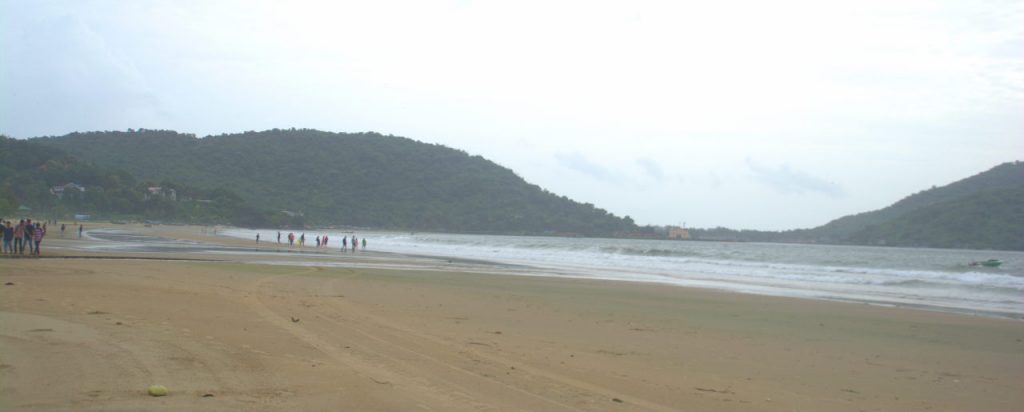Uttara Kannada is a district to the north-west corner of Karnataka. It is just to the south of Goa. Typical of all the regions to the west of the Indian peninsula, Uttara Kannada district is bordered by the Arabian sea to the west and by the Western Ghat mountains to the east. Such geographical diversity makes Uttara Kannada rich in places to explore, be it sandy beaches, waterfalls, rivers, rock formations or mountains with tropical forests.
Geography
We will see this time and time again when we explore the western part of the Indian peninsula, i.e. western Maharashtra, western Karnataka and Kerala. A narrow strip of land is fenced by the sea on one side and by mountains on the other. A system of rivers runs from the mountains to the sea, creating a rich ecosystem, good for beaches, forests, flora and fauna. Also the entire western peninsula receives rainfall between 2000 mm to 5000 mm every monsoon. This makes the region plush with greenery, forests, waterfalls and rivers. We will see in this post how the Uttara Kannada’s geography makes it a perfect destination.
The NH-17 Mumbai – Goa – Mangaluru – Kochi – Kanyakumari divides Uttara Kannada into west and east sections. To the west of the highway are all the beach getaways and beach side Kshetra temples, all with tales related to Lord Shiva and Ravana. To the east of the highway are the Ghat roads leading to the hill stations on the western Ghats and further to the cities of the Deccan plateau. So driving along the NH-17 from Mumbai, you’d have to turn right to go to the beaches and turn left to ascend the mountains. It would be the opposite if you join the NH-17 from Bengaluru / Mangaluru.
People of Uttara Kannada
There are several groups of people in Uttara Kannada. The coastal region is dwelled by fisher folk people and the fish eating Brahmins and descendents of Hindu empires like Chalukya and Vijayanagara. The mountain region has tribes such as Adivasis. One thing is common among all of these groups of people. They speak Kannada language, specifically a dialect common among north Karnataka districts such as Uttara Kannada, Belagavi, Hubbali, Kalaburagi and Raichur.
Due to the rule of Adil Shah, Uttara Kannada also has a sizeable Muslim population especially around the town of Bhatkal. They are well-versed in Kannada, but speak Urdu among themselves. Finally, the entire coast of Karnataka has received Konkanis fleeing from the oppression of the Portuguese in Goa. The Konkani speaking population follow either Hinduism or Christianity.
Here are the best places to see in Uttara Kannada district
Coast
Karwar
As the north-western most municipal corporation of Karnataka state, Karwar Is also one of the centres for the Indian Navy. The city is also the headquarters of Uttara Kannada district, whereas Sirsi is the most happening city. There are a handful of things to see at Karwar, otherwise the city is mostly administrative and residential. The Rabindranath Tagore beach to the west of the city is a good place to hang out during evenings.
Karwar lies right on the NH-17 Mumbai – Kanyakumari highway. So it is a good road head for travelling to Sirsi, Dandeli and Yana rocks, if you live in the west coast of India (e.g. cities such as Mumbai, Ratnagiri, Panaji, Madgaon / Vasco, Mangaluru, Udupi, Kochi, etc). If you live on the plateau, e.g. in a city such as Pune, Kolhapur, Bengaluru, Belagavi or Mysuru, then taking the NH-4 Mumbai – Pune – Kolhapur – Belagavi – Hubbali – Bengaluru – Chennai highway to Hubbali makes more sense as a road head and you can safely skip Karwar city without missing anything.
Gokarna
Gokarna is a religous Kshetra by the beach. The main temple in this town, i.e. Shri Mahabaleshwara temple, is said to be home to Atma Linga, i.e. a Linga with Lord Shiva’s soul. It is said that one who worships the Atma Linga everyday attains immortality. A story says that king Ravana of Lanka managed to obtain the Atma Linga from Himachal Pradesh’s Baijnath temple and was on his way to take it back to Lanka. Atma Linga would give Ravana immortality, but the condition was that it could not be placed on the ground during the entire trip. The moment the Atma Linga was placed on the ground, it would plant itself permanently and Ravana would not be able to take it back to Lanka. Seeing Ravana tired, a little boy (Lord Ganesha in disguise) offered to hold the Linga in his hands while Ravana took a nap. When Ravana fell asleep, the boy promptly placed the Linga on the ground and ran away, thus preventing Ravana from taking it to Lanka and attaining immortality. The Linga planted itself permanently to the beach on which Lord Ganesh placed it. This coastal town is present day Gokarna.
This is not the only story surrounding Gokarna. Another story talks about Parashuram, who pointed towards the sea in the southern direction and threw his axe into the water from Gokarna. The sea deity Varuna yielded and raised a piece of land that stretched all the way to Kanyakumari. Today we call this piece of land ‘Kerala’ and God’s own country.
Mythologies apart, Gokarna has two beaches which are frequented by foreigners nowadays to escape from the crowds of Goa. These are Kudle beach and Om beach.
Murudeshwara

The 123 feet (37 metres or 12 storeys) tall Shiva statue at Murudeshwara temple. Compare its height to the tiny looking temple complex at the base of the statue.
When Ravana awoke from his sleep, he found to his shock that the Atma Linga was planted to the ground. He tried to uproot it in vain. Infuriated, he unfurled a sash of cloth that was covering the Linga and threw it in rage as far as he could. The sash is said to have landed where today we can visit the sea-side temple of Murudeshwara, which we at India 360 found to be one of the most beautiful temples in India.
The temple has a 123-feet statue of Lord Shiva in a cross-legged position. It is one of India’s tallest Shiva statues. The Raja Gopura at the entrance of the temple is also one of the tallest in India at 234 feet.
Western Ghats
Sirsi

Marikamba temple at Sirsi
Sirsi Is a hill station on the Western Ghats of Uttara Kannada. It can be reached from both Karwar and Hubbali as it is on the highway between the two cities. The road goes through a beautiful Ghat road inside a forest with potential for spotting wild animals such as elephants, panthers and tigers. Sirsi town is known for its beautiful Marikamba temple and has several plantations with beetel leaves and areca nuts (paan and supari). Another prized crop growing in the plantations around Sirsi is vanilla, the second costliest cash crop, second only to Kashmir’s saffron. Due to the proximity to the Kali river, there are several waterfalls around Sirsi during monsoon, while there are a few perennial waterfalls too.
Dandeli

Rafting on Kali river at Dandeli
Dandeli is a town on the bank of the Kali river, and is conveniently situated at a place where the river is on a gentle slope, but descends roughly creating plenty of rapids. Hence, Dandeli is a town perfect for rafting.
Yana

Yana rocks
Yana is a village reachable from the coastal town of Kumta or from Sirsi in the mountains. Outside this village are two hills with a unique rock formation. The rocks are named Yana Rocks. These are volcanic rocks formed in layers and consist of a variety of black coloured limestone called karst. The two rocks are named Bhairaveshwara and Mohini. At the base of Bhairaveshwara is a cave temple with a natural Shiva Linga. The Linga is said to have formed on its own, a phenomenon called ‘Swayambhu’ in Sanskrti, i.e. the one who generated himself / herself. Drops of water always drip on top of the Linga from the orifices in rock ceiling, thus making an picture-perfect Shiva Linga that we find in temples. Also located in vicinity of Yana rocks are the Vibhooti waterfalls, which are seasonal and can be seen only during monsoon.
Dudhsagar falls
While Dudhsagar falls are in the state of Goa, there is a way to approach them from Uttara Kannada district from a town called Castle Rock. From Castle Rock, a 10-km walk on the railway tracks on the Londa – Castle Rock – Dudhsagar – Kulem – Madgaon route (South Western Railway) or via a jungle route (path not well-known or marked, so avoid without guides) gets us into Goa state and right on the railway bridge near which Dudhsagar falls plunge. India 360 had mixed success with this railway route trek. A winter trek in October was allowed, while a monsoon trek in August was prohibited due to a recent accident. You should check with authorities at Castle Rock or Londa.
Conclusion
Uttara Kannada is a district that is so beautiful, so full of diversity and it gives you so many experiences that you feel like coming back for more several times. It is definitely one of the most beautiful stretches of land you will travel to in India. A trip to Uttara Kannada is something you should absolutely plan either during monsoon or better yet just after the monsoon recedes.
That said, there are several districts on the west coast of India that look just like Uttara Kannada and have similar diversity. Maharashtra state’s Thane district (my home district), Palghar district, Raigad district, Ratnagiri district and Sindhudurg district all have the Arabian sea to the west and Sahyadri hills (Western Ghats) to the east. Kerala’s Kottayam district is bordered by the backwaters of Alleppey to the west and the Western Ghats of Munnar and Vagamon to the east. Watch out for more posts about peninsular India’s western region in future posts as they will help you plan a complete trip of this beautiful monsoon-blessed area between the Arabian sea and the Western Ghats.




